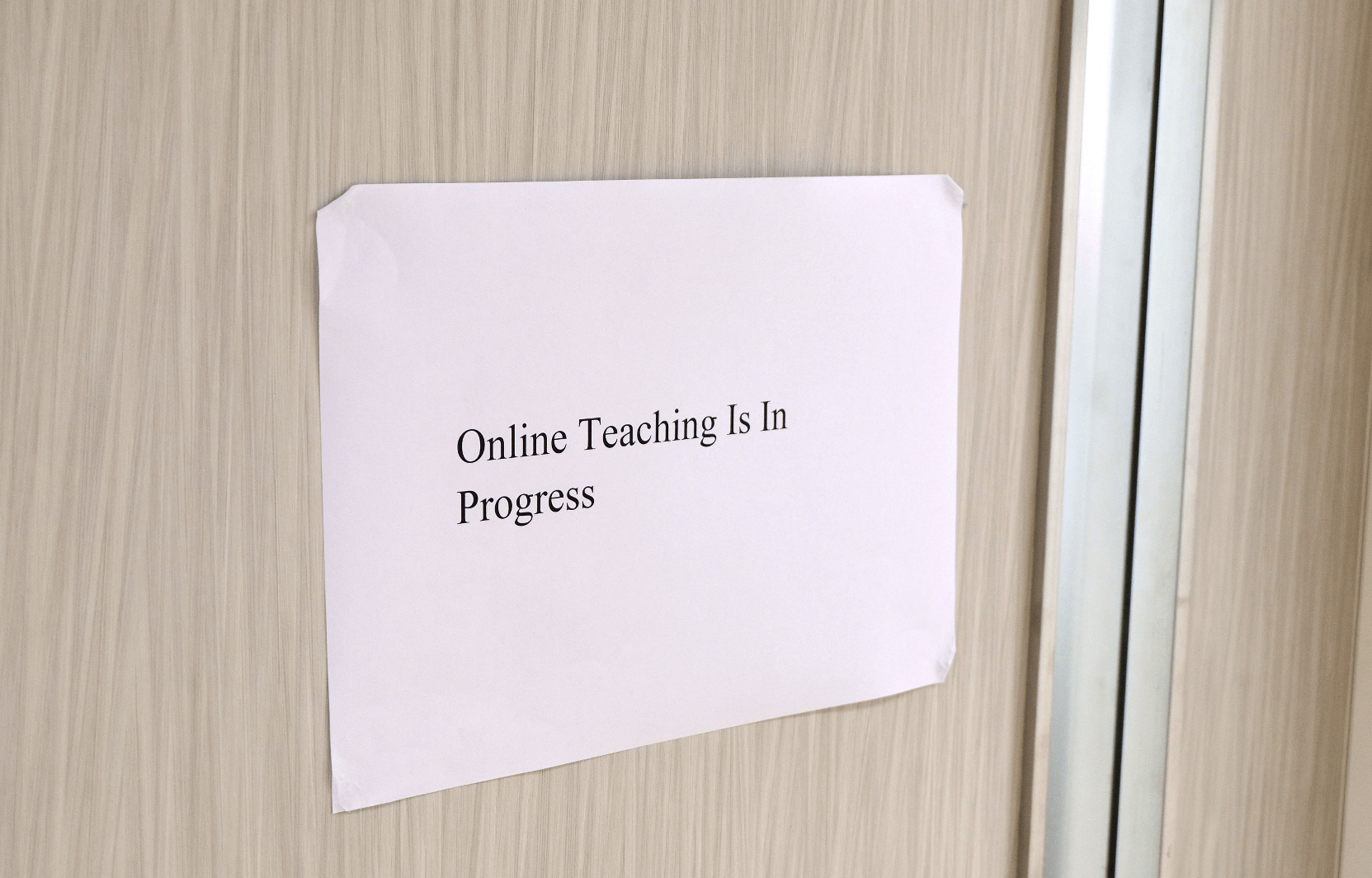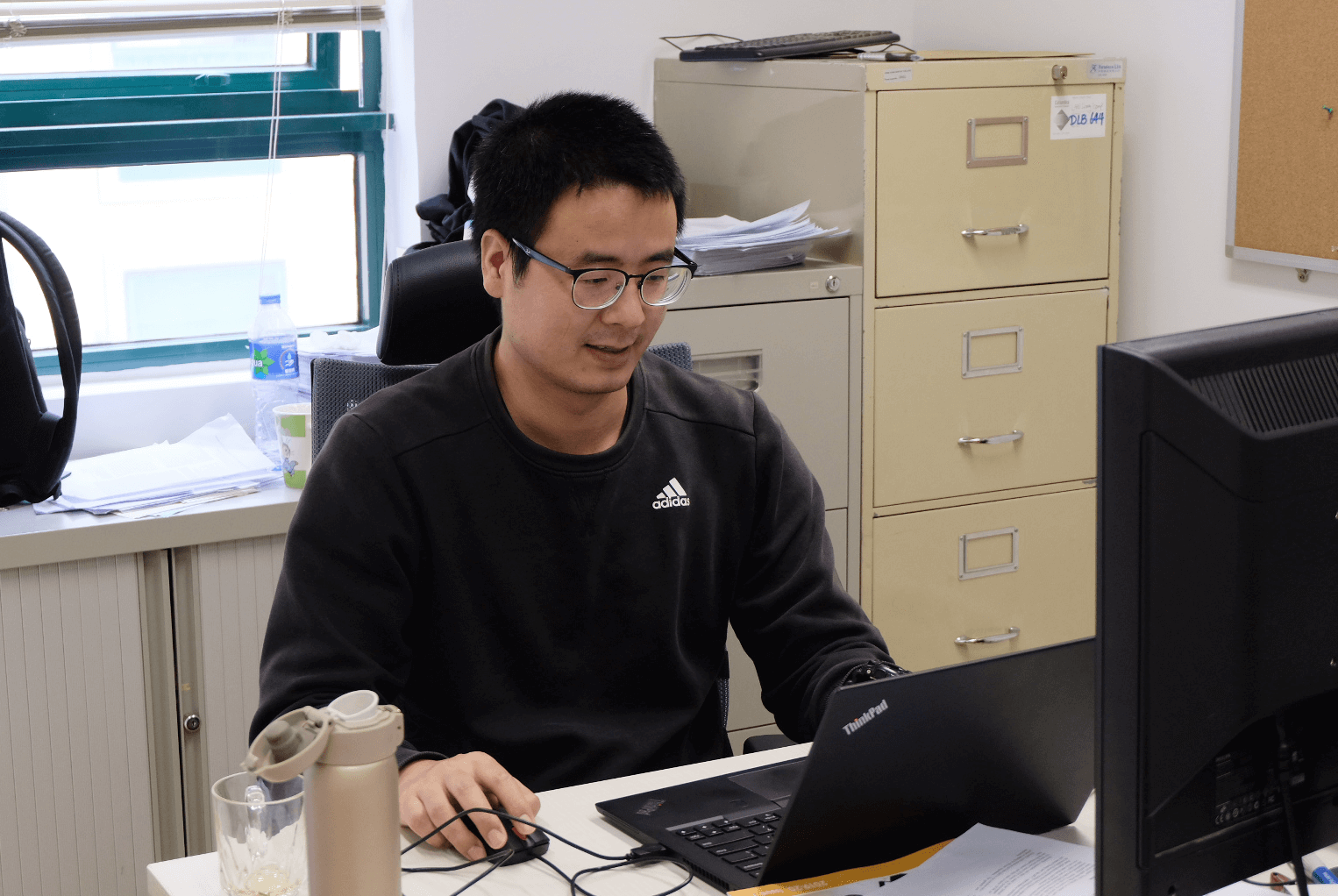Time has frozen in the hallways of the Department of Computer Science at Hong Kong Baptist University. All the lights on, but the empty rooms are almost too eerie to step into. A piece of paper that reads "Online Teaching In Progress" is stuck to a door. Behind it, Lan Liang is sitting in front of his computer, facing a screen filled with the names of his students framed in a grid.

Due to the overwhelming spread of COVID-19, universities in Hong Kong and mainland China have suspended on-campus teaching activities since January. Resumption of classes before the Summer now seems unlikely. Teaching activities have moved online. But the high-tech teaching tools have caused some confusion. Some teachers are uncertain whether students understand the content while others aren't sure how to use the online teaching software.
Dr Lan, a lecturer from the Department of Computer Science at HKBU is among them. He started teaching at the university two years ago but has experienced the suspension of on-campus classes twice so far. Dr Lan started teaching using the video conferencing application, ZOOM, this semester. Teachers share their computer screens in real time with students.
Dr Lan found it difficult to teach that way. "At the beginning, I actually felt very weird just talking to a computer for two hours," said Dr Lan, "I did not know whether the students really understood the concept or not. I just kept talking and talking." He asked his students to turn off their cameras because he was afraid that the network could not bear the traffic if everyone was on video.

Dr Lan is not alone. Jean Lai is another lecturer at the Department of Computer Science. "I cannot see the students. I don't know if they are listening, or can understand what I am talking about."
Some teachers tried to ask students to turn on the cameras. "Very few of them responded," said Alison Leung, a senior lecturer who teaches journalism at HKBU. "They might say we woke up early and wouldn't want to be seen."
Niu Gang, 46, who teaches clinic at the First Affiliated Hospital of Xi'an Jiaotong University in mainland China is similarly concerned. "It is impossible to teach with all the cameras on when there are 80 or even 90 students in a class," said Mr Niu.

But this is not the only problem Mr Niu faces. "Not enough passion," he said. "Also, I am always afraid that the internet breaks down and affects teaching." He uses Rain Classroom and Tencent Meeting to teach. "Rain Classroom is more suitable for teaching," he said, "But the problem is that there are too many people using the platform at the same time. The system sometimes cannot bear such a great load of work. "
Rain Classroom, a free Online Massive Open Online Courses (MOOC) platform presented by Tsinghua University, is commonly used by universities in the mainland for online teaching. It allows teachers to make use of WeChat, PowerPoint and online classrooms to conduct teaching activities. Teachers can send class-preview materials with audio narrations, class notes and exercises to students' mobile phones in advance. In-class quiz, after-class teaching data analysis, bullet screen (real-time comment stream), and class attendance are all available in the Rain Classroom. Tutorials on how to use the platform as well as paid online courses taught by teachers from top universities in China can also be found.
Ellen Yang, a university English teacher from Xi'an, Shaanxi province in mainland China uses other platforms in addition to Rain Classroom. She said teachers always need to be prepared to teach on multiple platforms. "If one platform doesn't work during the class, we would immediately change to another one." Tencent Meeting and Ding Talk are her alternatives.
But Ms Yang doesn't like the lack of verbal communication during online classes. She explained that teachers and students interact mostly using text messages, be it live on-screen comments or via chat groups.
This is not the first time Ms Yang is using the Rain Classroom in her 22 years of teaching career. "We have used online teaching tools in our classes before. For instance, we prepared online materials for students to foster their self-learning capacity," said Ms Yang. "But it is my first time to teach online on such a great scale."
Mr Niu had also used the Rain Classroom when he first started teaching. "It can record and be played back."
But for Dr Lan, Dr Lai and Ms Leung, using online teaching tools is a new experience. "I used ZOOM or Skype for meetings before but not for teaching," said Dr Lai.
Different from Rain Classroom, ZOOM follows a membership-based strategy. To have a video group meeting over 40 minutes, users need to pay to upgrade their plans. HKBU not only pays for the teachers but also provides technical support for staff. Meanwhile, there are regular sharings about online teaching among teachers, said Ms Leung.
At Ms Yang's university, IT teams offer training and online pre-testing for the teachers before classes start at least one and a half weeks before the start of the semester. In addition, teachers experienced in online teaching are invited to give tutorials.
"At the beginning, I was totally confused," Ms Yang said. However, after using the online platforms for some time, she discovered their advantages. "We can answer students' questions immediately by texting in chat groups. It makes good use of limited time and space in teaching activities."
But will online teaching replace face-to-face teaching in the future? All five teachers said "no".
Mr Niu said he had thought about it but he changed his mind. "There are many things that need to be improved," he explained. "Apart from that, teaching the clinic is about practical work. Thus it cannot be substituted with online simulations."
Dr Lan also felt that online teaching is not as good as face-to-face classes, especially for the lab classes for computer science. "Most of the students have their own questions for their codes. I need to take a look at their codes, and then I can figure out what their problems are."
"It might not become the major format. But it could be a way to support the main teaching activities," said Ms Yang.
《The Young Reporter》
The Young Reporter (TYR) started as a newspaper in 1969. Today, it is published across multiple media platforms and updated constantly to bring the latest news and analyses to its readers.

Caught in the middle: how Hong Kong protests affect the mental state of mainland students in the city

Fitness video games under home quarantine




Comments